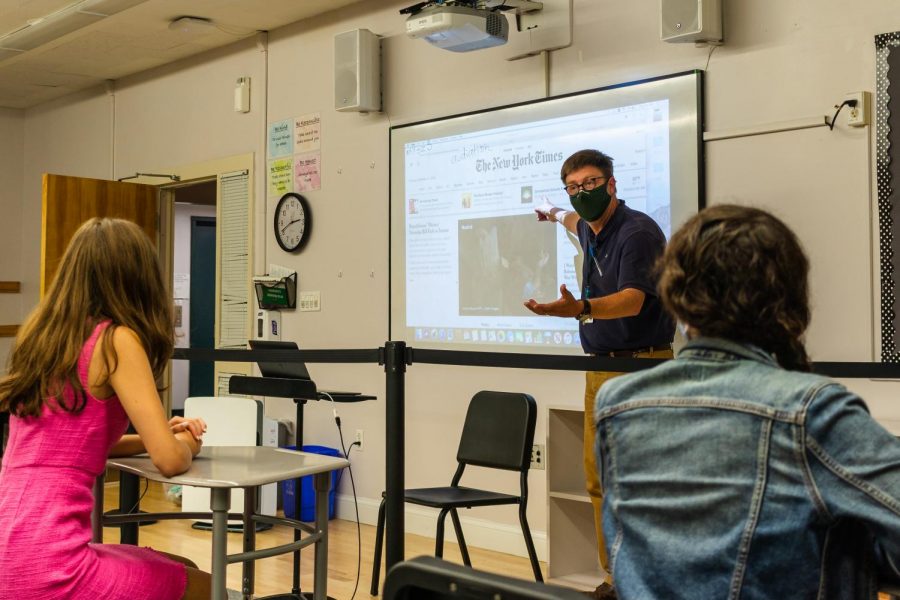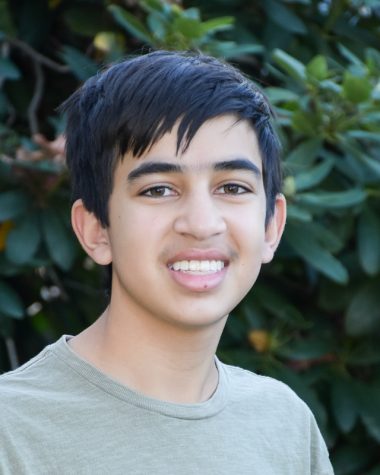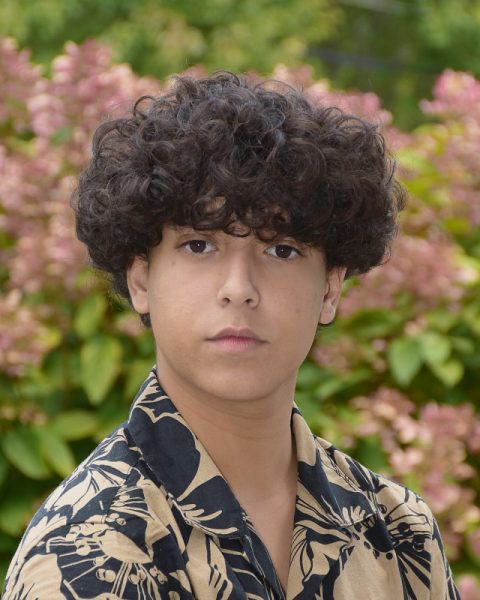Curriculum Modified During COVID-19
Upper School History Teacher Ted Barker-Hook gives a lesson on The New York Times.
April 27, 2021
Due to the COVID-19 pandemic, educators continue to adapt to various challenges, including teaching in-person and concurrent students.
Here, it’s no different for Director of Global Studies and history teacher Kelly Neely.
“There have been many space and time constraints due to the COVID restrictions this year, which have forced me to rethink many of the activities and discussion protocols I generally use in my classes,” Neely said. “There has been much less group work and class discussion.”
Despite these modifications, Hebe Qiang ‘23, a student in Neely’s Middle East and North Africa course, is satisfied with the material she has learned.
“Throughout the semester-long class, I have had the opportunity to learn about many interesting topics,” Qiang said. “We have covered Islam, the history of ancient Middle East, the Armenian Genocide, and Modern Iran before and after the Iranian Revolution in 1979.”
Madeline Hsiao ‘23 said that she went into the school year with no concrete expectations of what a curriculum during COVID-19 would look like.
“Some classes are certainly moving quickly this year, though perhaps that is the reality of an increased workload in every upper school grade,” Hsiao said. “At times, I wish that we could have more time for review to solidify student understanding of past units instead of constantly pushing through new content,” she said.
For Middle School Math Teacher Andrew Beal, he misses closer interactions with students.
“The biggest challenge for me in the classroom is the limited movement,” Beal said.
Beal said he is most comfortable working beside students when they need support, a teaching style that has been complicated with social distancing.
“It is much harder for a student to ask for help across the room and have me instruct them in front of their peers,” Beal said.
The pandemic has caused a shift to a new style of education, but many teachers here remain hopeful that the next school year will allow them to return to previous methods of teaching.
“Although I prefer having all of my students in the classroom, I am now used to teaching both in person and on Zoom at the same time,” Neely said. “However, I am hopeful that we’ll be able to get back to a more normal way of doing things next year.”
























































